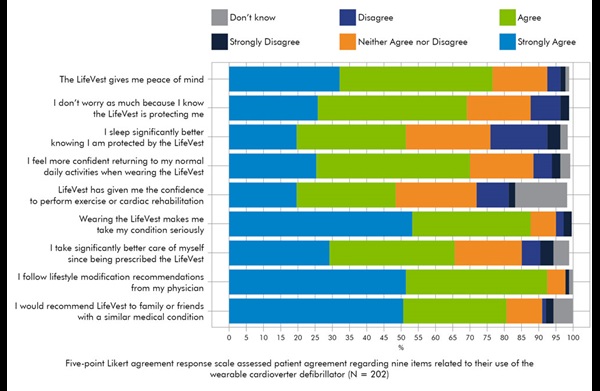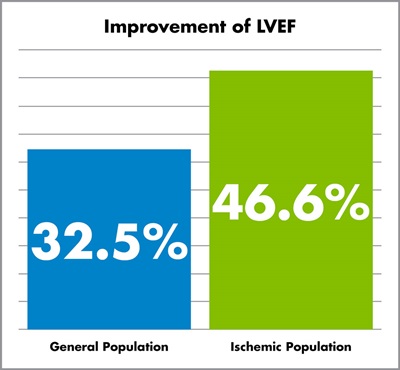WEARIT France
<< Back to all published studies
Use of and Compliance with the Wearable Cardioverter Defibrillator with Transient Risk of Sudden Cardiac Death
Purpose
- This post-market, multicentric, observational national study was designed to provide contemporary real-world data on wearable cardioverter defibrillator (WCD) use, not only in terms of efficacy, but also compliance and adherence.
Methods
- 1,157 patient analysis across 88 French centers
- Retrospective analysis of patients who used the WCD between May 2014 and December 2016.
- Prospective analysis of patients fit with the WCD from January 2017 through March 2018.
- Included patients with ischemic cardiomyopathy (82.1%), after implantable cardioverter defibrillator explant (10.3%), and before heart transplantation (7.6%).
- All patients received systematic education session through a standardized program across France at the time of initiation of WCD therapy and were systematically enrolled in ZOLL’s online patient data management system.
Adherence to WCD and impact on perceived health status
- The median daily WCD wear time was 23.4 hours in the overall population.
- Overall, the use of WCD was generally positively associated with health and lifestyle benefits as shown in the following table.
Results
- The sustained VT/VF event rate was high with 3.1% of patients who had a VT/VF event of which more than half were treated by the WCD.
- 62% of the ventricular tachyarrhythmias occurred during the 30 first days and 38% after the 30 first days.
- Almost all patients who received a treatment shock had their VT/VF episode successfully terminated after one treatment.
- 1 patient required 2 shocks to terminate the arrythmia.
- Rate of survival post shock: 100%.
- All patients who were admitted to the hospital following an appropriate shock survived to hospital discharge.
- There was a low occurrence of inappropriate therapy (0.7%).
- In the general population, upon termination of WCD use, EF improved in 32.5% of patients to the point that an ICD was no longer indicated, while 50.6% of patients required permanent implantation of an ICD. In the ischemic population that represented 82% of enrolled patients, 46.6% of patients had an EF improved and no longer needed an ICD.
Conclusions
- These findings reinforce previous studies on the efficacy and safety of the WCD in the setting of transient high-risk in selected patients.
Click here to read the full publication
Garcia R, Combes N, Defaye P, et al. Wearable cardioverter-defibrillator in patients with a transient risk of sudden cardiac death: the WEARIT-France cohort study. EP Europace. 2020;23(1):73-81. doi:10.1093/europace/euaa268



